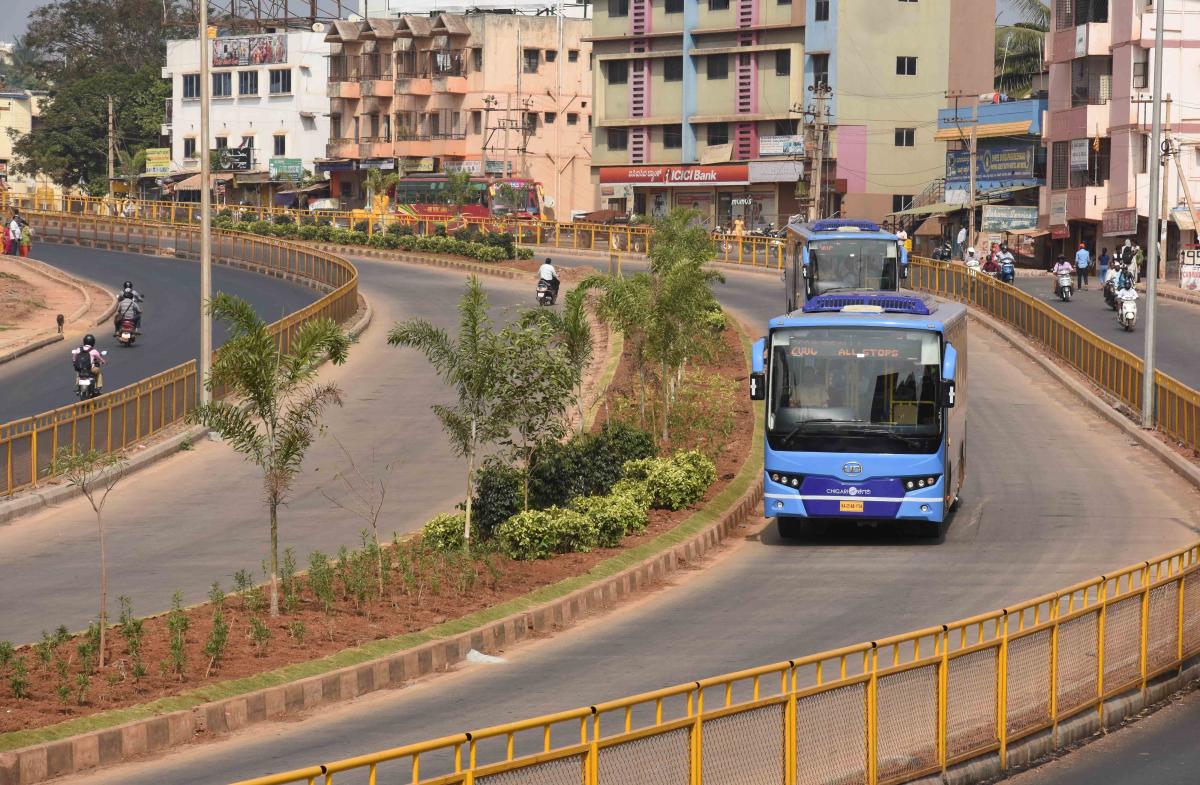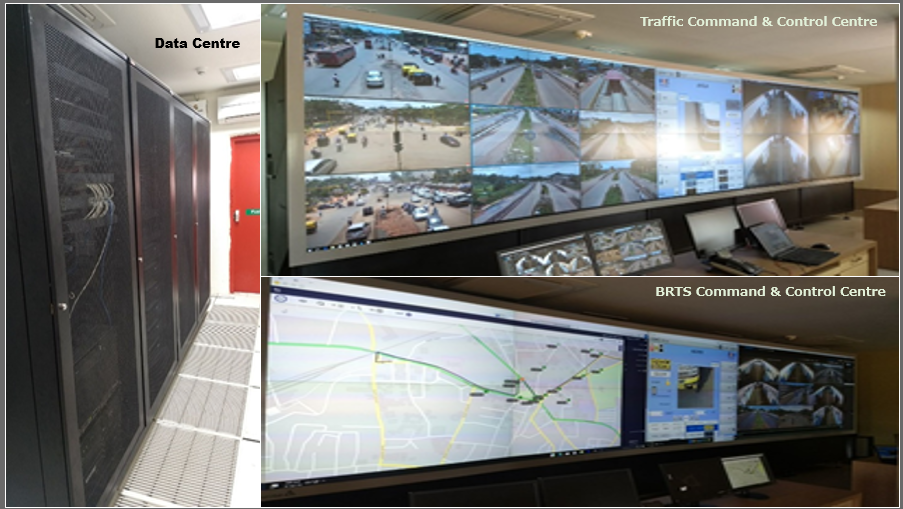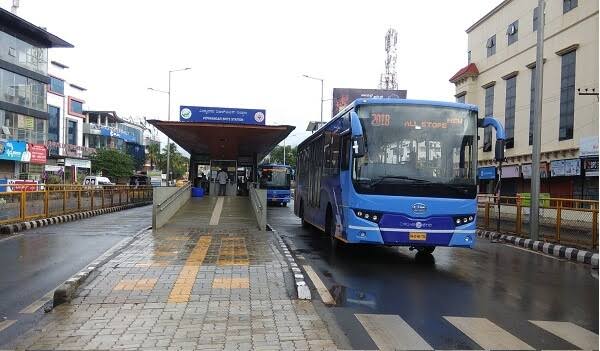


Hubli Dharwad BRTS
Hubballi Dharwad BRTS ITMS Integrated Smart Transportation Project with NEC
Basic Details
- Project Name: Hubli Dharwad BRTS.
- Name of the organization: Hubballi-Dharwad BRTS Company Limited.
- Main Users of the Project: The Hubballi-Dharwad BRTS project has been taken up with the part assistance of World Bank- Global Environment Facility (GEF) assisted under the Sustainable Urban Transport Project (SUTP) programme. The length of the BRTS transit system is 22.25 km from CBT-Hubballi to CBT-Dharwad and 35 km in the urban area of the twin cities to provide sustainable transit between the cities.
- Project Duration: 9 months
- Main Purpose: Roads are separated for the transportation of BRTS buses and public private vehicles, and a one-way transportation system.In addition, a well-designed and two-way traffic system with well-equipped bus stops, central and regional bus stops, pedestrian overpasses, road bridges, and decent sidewalks to promote non-motorized traffic is also implemented under the infrastructure. Urban transport buses traveling under the Hubballi-Dharwad BRTS project are named Chigari, which are air-conditioned, high quality, and equipped with Intelligent Transport System (ITS). In addition, travelers need to buy a for QR Coded ticket and in order to save passengers time smart card system has been implemented.
- Solutions Implemented: ITMS INTEGRATED SMART TRANSPORTATION for BRTS
Project Highlights
-
- The ITS system is also an important part of South India’s most successful project with the efforts and cooperation of the Hubballi-Dharwad public.
- The public can get information on bus operations and amenities through the officially issued Chigari App on their mobile, where passengers can get the name of the bus station, bus station fare and bus schedule through App and SMS.
- A comprehensive picture of where the bus is, how fast it goes, how long it will take to arrive, and at which station it will not stop is provided.
- The GPS system also alerts the driver when the bus is over-speeding from one bus to the next.
- Prioritize BRTS buses at junctions and facilitate road crossing for pedestrians through signals.
- Passengers can check how long the bus can reach the bus station they are waiting for via their mobile and will also automate the information on PIS installed at the bus station.
- Under this system, computerized bus tickets can be purchased in advance at bus stops or can be travelled using smart cards. The QR code printed on bus ticket and the smart card can only be accessed at the bus station when these are scanned on machines installed at stations.
- Another feature of ITS is that all buses of the HDBRTS are monitored by the Control Room through the Vehicle Tracking System (GPS). By this a complete information can be transmitted to the control room, such as where the bus is, how fast it will go, how long it will take to get to the next station, what stops it is, and the change in bus traffic and change of bus route.
- The ITS will assist in the operation of bus units, workshops, terminal and divisional offices, operation of buses and bus schedules and personnel management, inventory management, human resource development, accounting and other administrative functions.
Project Abstract
The following systems have been incorporated into the project for smooth and safe operation despite the above system in the smarter transport system.
- Automatic Vehicle Locating System
- Automatic Traffic Control System
- Transit Management system
- Depot Management system
- Vehicle Planning Scheduling
- Automatic Fare Collection System
- Incident Management System
- Video Management System
- Network Management System
- Automatic Number Plate Recognition System
